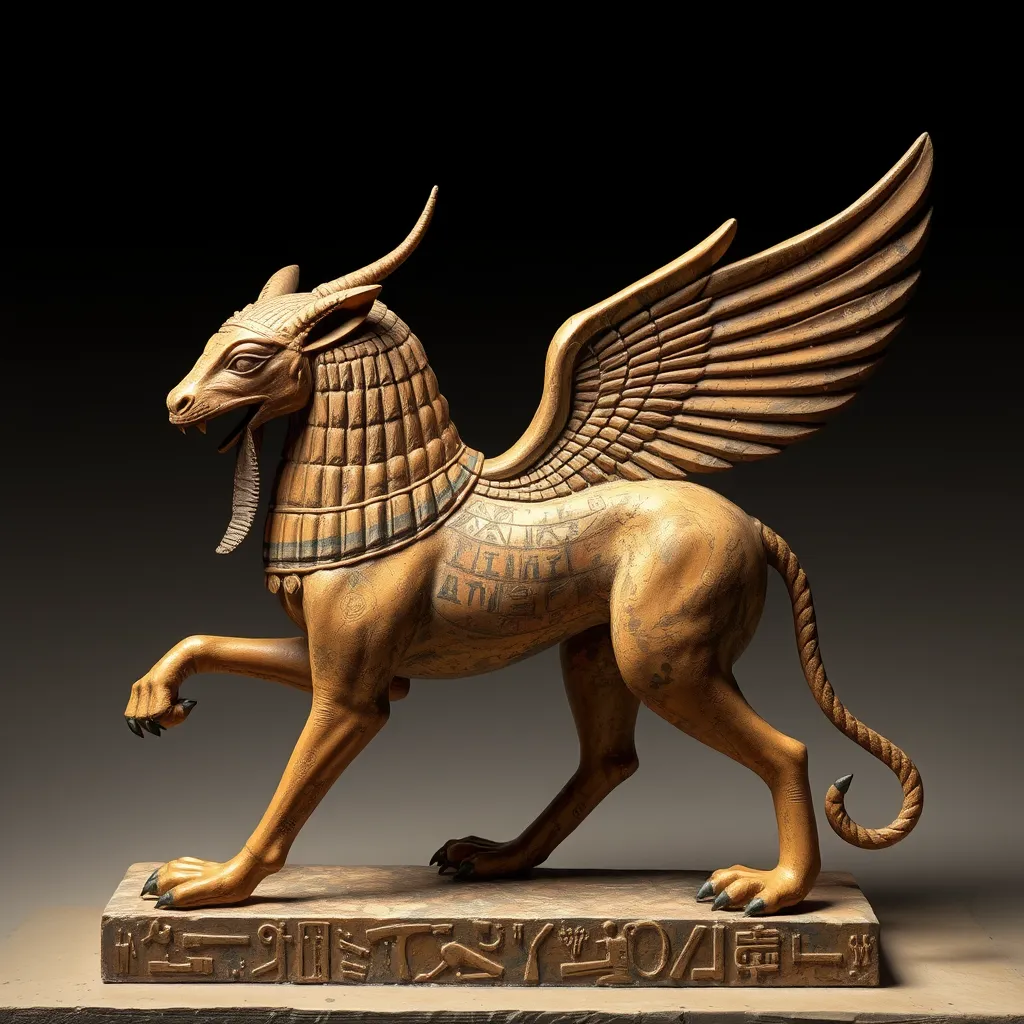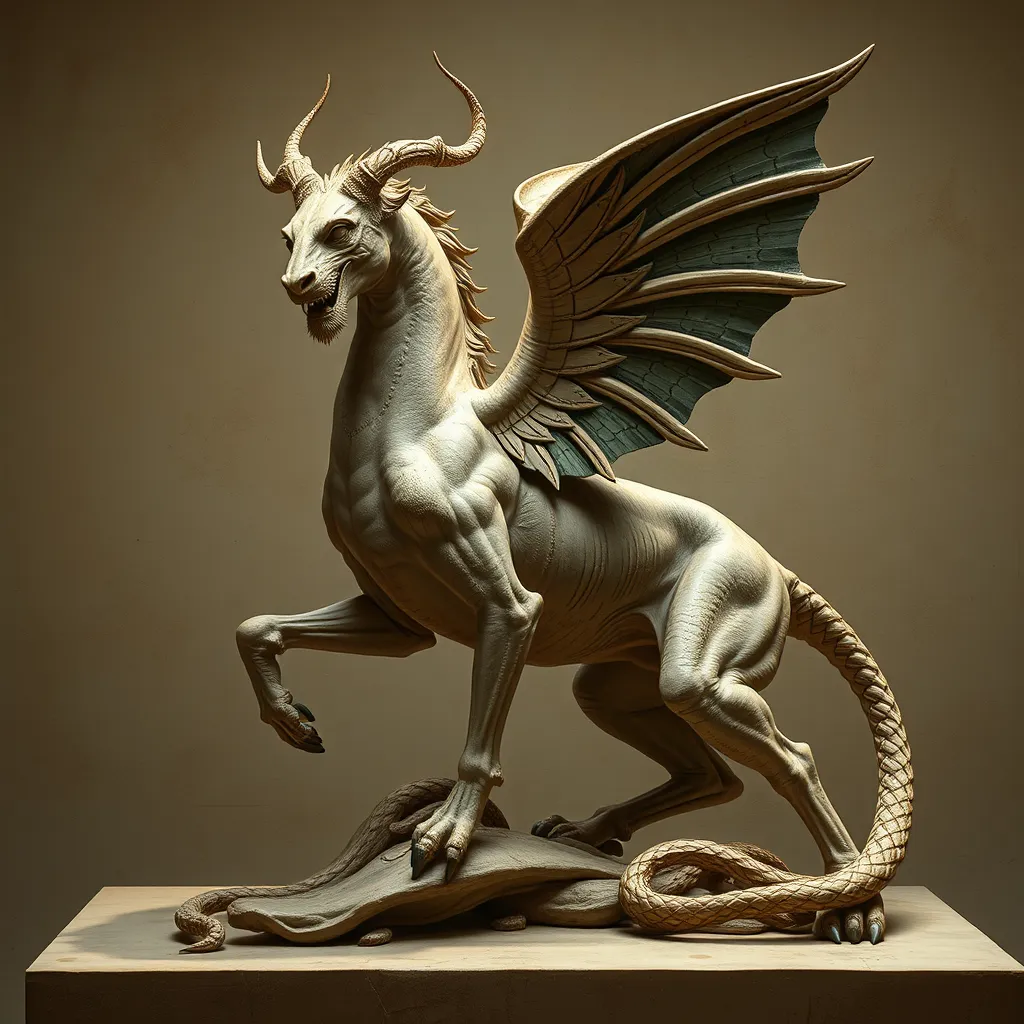The Chimera in Egyptian Art: Hieroglyphics, Paintings, and Sculptures
I. Introduction
The term ‘Chimera’ in the context of Egyptian mythology refers to a fantastical creature that embodies the characteristics of multiple animals. This mythical being is often depicted with a lion’s body, a goat’s head protruding from its back, and a serpent for a tail, symbolizing a fusion of different powers and attributes.
The importance of the Chimera in ancient Egyptian culture extends beyond mere representation; it embodies the complex relationship between humanity, divinity, and the natural world. The Chimera served as a symbol of strength, protection, and the duality of existence, making it a vital component of religious and artistic expression.
This article will explore the various representations of the Chimera in ancient Egyptian art, focusing on hieroglyphics, paintings, and sculptures, while also examining its historical context, symbolism, and lasting influence on contemporary culture.
II. Historical Context of the Chimera
The origins of the Chimera in ancient Egyptian mythology can be traced back to the early dynastic periods, where the fusion of animal forms was often used to convey power and divinity. The Chimera was not merely a creature of folklore; it played a significant role in the Egyptian cosmology, embodying the interplay between chaos and order.
Throughout various dynasties, the depiction of the Chimera evolved, reflecting changes in artistic styles and societal values. In the Old Kingdom, for instance, the Chimera was often illustrated in a more rigid, formal style, reflecting the era’s emphasis on order and stability. In contrast, later periods saw a more dynamic and expressive representation of the Chimera, symbolizing the ever-changing nature of the divine.
III. The Chimera in Hieroglyphics
Hieroglyphics served as a primary means of communication in ancient Egypt, and the representation of the Chimera within this writing system is both fascinating and complex. The Chimera is often depicted as a composite being, combining various elements of different animals to convey its multifaceted nature.
Symbolic meanings associated with hieroglyphic depictions of the Chimera include:
- Protection: The Chimera was believed to protect against evil spirits.
- Power: Its composite form represented the strength of various animals and the unity of their powers.
- Transformation: The Chimera illustrated the theme of transformation, a key aspect of Egyptian mythology.
Significant inscriptions featuring the Chimera can be found in tombs and temples, often accompanied by other protective symbols to ensure safe passage into the afterlife.
IV. The Chimera in Egyptian Paintings
Paintings in tombs and temples often depict the Chimera in elaborate scenes that highlight its role in the afterlife. These representations not only serve an aesthetic purpose but also carry deep spiritual significance.
Artistic styles and techniques used in the representation of the Chimera vary, but common elements include:
- Vibrant Colors: Use of bright pigments to enhance the visual impact.
- Symbolic Composition: Placement of the Chimera in scenes of judgment or protection.
- Attention to Detail: Intricate detailing of the Chimera’s features to emphasize its mythical nature.
The role of the Chimera in the afterlife is interpreted in these paintings as a guardian, guiding the deceased through the challenges of the afterlife and ensuring their safe passage to the realm of the gods.
V. The Chimera in Egyptian Sculptures
Sculptural representations of the Chimera are another significant aspect of ancient Egyptian art. These sculptures, often created for temples or tombs, reflect the same themes of power and protection found in other artistic mediums.
Materials and methods used in creating Chimera sculptures include:
- Stone Carving: Limestone and sandstone were commonly used for their durability.
- Woodwork: Some smaller representations were crafted from wood, showcasing intricate carvings.
- Inlay Techniques: Use of colorful stones to enhance the visual appeal of the sculptures.
Notable examples of Chimera sculptures can be found in various museums, where they are celebrated for their craftsmanship and the insight they provide into the beliefs and values of ancient Egyptian society.
VI. The Chimera’s Symbolism and Cultural Significance
The Chimera serves as a powerful symbol of protection and power within ancient Egyptian culture. Its unique form represents the merging of different strengths, making it a fitting guardian for the deceased in their journey to the afterlife.
Connections between the Chimera and other mythological creatures in Egypt are evident, as it shares traits with various deities and mythical beings, such as:
- Sphinx: Another composite creature that symbolizes wisdom and protection.
- Ammit: A creature that devours the souls of the unworthy, emphasizing the theme of judgment.
- Set: A god often depicted with animal features, representing chaos and strength.
The impact of the Chimera on later cultures and art forms can be seen in various mythologies, where hybrid creatures symbolize the blending of different worlds and ideas.
VII. Modern Interpretations and Influences
In recent years, there has been a resurgence of interest in the Chimera within contemporary art. Modern artists are increasingly drawing inspiration from ancient Egyptian depictions of the Chimera, reinterpreting its symbolism for new audiences.
The influence of ancient Egyptian representations of the Chimera on modern artists includes:
- Incorporation of Hybrid Forms: Many contemporary artists utilize the idea of hybrid creatures to explore themes of identity and transformation.
- Symbolism in Literature: The Chimera continues to appear in modern literature as a metaphor for complexity and duality.
- Art Exhibitions: Various art exhibitions showcase the Chimera, highlighting its historical significance and contemporary relevance.
The preservation of the Chimera’s legacy in modern art and literature serves as a testament to its enduring power and significance across cultures and time.
VIII. Conclusion
In summary, the Chimera holds a significant place in Egyptian art, representing complex themes of protection, power, and transformation. Its multifaceted depictions in hieroglyphics, paintings, and sculptures reveal much about ancient Egyptian beliefs and values.
Reflecting on the lasting impact of the Chimera across cultures and time reveals how ancient symbols continue to resonate in modern artistic expressions. Understanding these ancient symbols is crucial in appreciating their cultural significance and their ability to transcend time.
In conclusion, the study of the Chimera in ancient Egyptian art not only enriches our knowledge of the past but also highlights the interconnectedness of mythology and artistic expression throughout history.



